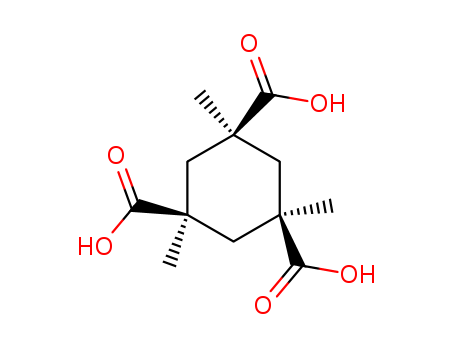10.1016/j.bmc.2007.03.064
The research aimed to develop more potent HIV-1 entry inhibitors by synthesizing a series of trivalent CD4-mimetic miniproteins. These miniproteins were designed to target the CD4-binding sites on the trimeric gp120 complex of HIV-1, with the hypothesis that multivalent interactions would enhance their anti-HIV activity. The key chemicals used included CD4M9 miniprotein moieties, which were tethered to a threefold-symmetric scaffold via maleimide-thiol ligation. Kemp's triacid (KTA) is used as a core scaffold for constructing trivalent maleimides. It is chosen because it provides a rigid, threefold-symmetric framework that is ideal for assembling multivalent structures. The KTA scaffold is particularly useful in supramolecular chemistry for building peptide-peptoid structures due to its inherent symmetry and stability. In this study, mono-N-Boc-protected diamines with varying lengths are coupled to KTA using EDCI as a coupling agent, followed by deprotection and reaction with N-methoxycarbonylmaleimide to form the trivalent maleimides. These maleimides are then used to tether CD4M9 miniprotein moieties, creating trivalent CD4-mimetic miniproteins designed to target the CD4-binding sites on the HIV-1 gp120 complex. The use of Kemp's triacid allows for the precise arrangement of the CD4M9 moieties in a trivalent configuration, which is crucial for enhancing the anti-HIV activity through multivalent interactions.






